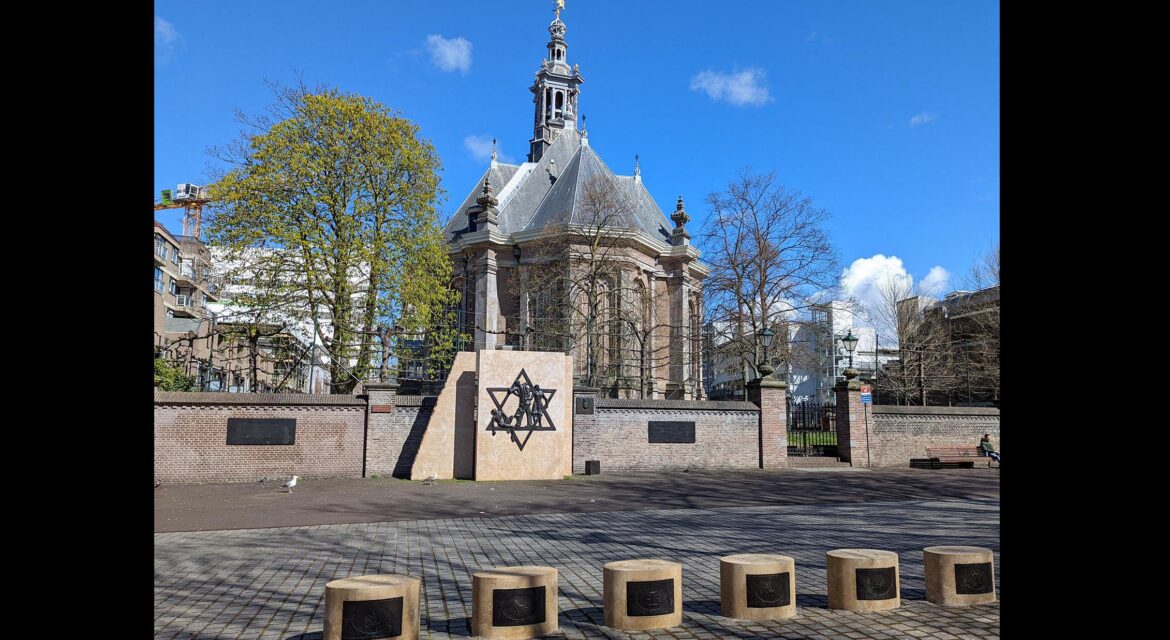 Rabbijn Maarsenplein is a square in The Hague that is named after one of the victims of the Holocaust who was an essential member of the surrounding community. The square formed the heart of the Jewish quarter of The Hague until World War II changed everything for the people and location. An endeavor to honor the legacy associated with this history has seen Rabbijn Maarsenplein transformed in multiple ways to enable it to become an essential element of the contemporary community and city.
Rabbijn Maarsenplein is a square in The Hague that is named after one of the victims of the Holocaust who was an essential member of the surrounding community. The square formed the heart of the Jewish quarter of The Hague until World War II changed everything for the people and location. An endeavor to honor the legacy associated with this history has seen Rabbijn Maarsenplein transformed in multiple ways to enable it to become an essential element of the contemporary community and city.
Named After Rabbi Isaac Maarsen
 The heart of the Jewish district in The Hague from 1625 until World War II, what is now known as Rabbijn Maarsenplein was greatly impacted during the German occupation of the Netherlands (1940-’45) during World War II. Families and residents were forced to leave, which included Rabbi Isaac Maarsen, who was chief rabbi of The Hague. He and his family, like many of the other displaced residents, would not ever return to their homes.
The heart of the Jewish district in The Hague from 1625 until World War II, what is now known as Rabbijn Maarsenplein was greatly impacted during the German occupation of the Netherlands (1940-’45) during World War II. Families and residents were forced to leave, which included Rabbi Isaac Maarsen, who was chief rabbi of The Hague. He and his family, like many of the other displaced residents, would not ever return to their homes.
In 1999, the municipality of The Hague decided to rename the square in his honor. This transformation would enable the installation of several memorials that similarly honor victims of the Holocaust to further connect them with the community of the past and present.
A bronze plaquette called ‘Rachel weent’ (Rachel weeps) is the oldest memorial in Rabbijn Maarsenplein. The Jewish Children’s Monument is a functional playset that was placed on the schoolyard of the former Jewish primary school at the Bezemstraat. Both memorials were created in memory of the Jewish children in The Hague who died in the Second World War. The Jewish Children’s Monument is both a monument and a playground for children.
In 1967, a Star of David that became known as the Amalek monument was installed in the area but it proved to be too simple for the transformed Rabbijn Maarsenplein. Artist Anat Ratzabi used it to create the Jewish Monument The Hague, commemorating the more than 12,000 Jewish residents of The Hague who were deported and murdered during World War II. It shows a door ajar and two bronze suitcases that represent the deportation of individuals and families. The door features the Amalek monument star of David with four desperate people. In front of it are six seats which refer to the six million murdered Jews. Each stone has a relief sculpture on both sides showing one of the twelve tribes of Israel.
These memorials and remembrances have provided the current Jewish community that defines Rabbijn Maarsenplein with a connection to the past and future. Doing so has ensured that both residents and visitors can connect with this history in a way that cultivates understanding and remembrance.

Legacy That Connects the Past and Future of a Community
 While the history associated with individual squares and entire communities is often reflected in the monuments and landmarks that are located across them, few connect people and history like the ones in Rabbijn Maarsenplein. The transformation of the space was enabled thanks to an effort to honor the individual and collective history that has come to define it, ensuring that people of all eras can connect with the past and present of the community.
While the history associated with individual squares and entire communities is often reflected in the monuments and landmarks that are located across them, few connect people and history like the ones in Rabbijn Maarsenplein. The transformation of the space was enabled thanks to an effort to honor the individual and collective history that has come to define it, ensuring that people of all eras can connect with the past and present of the community.


